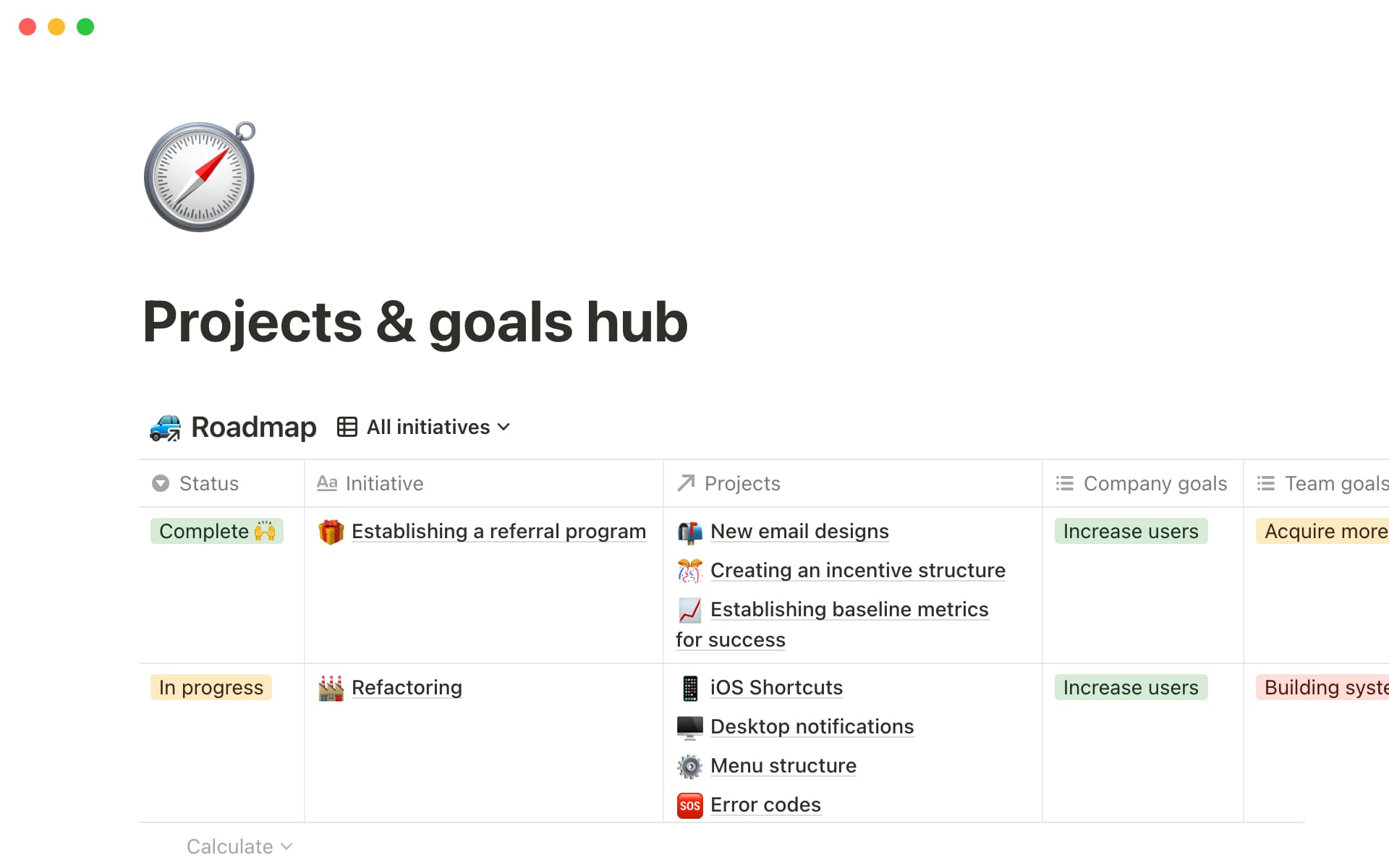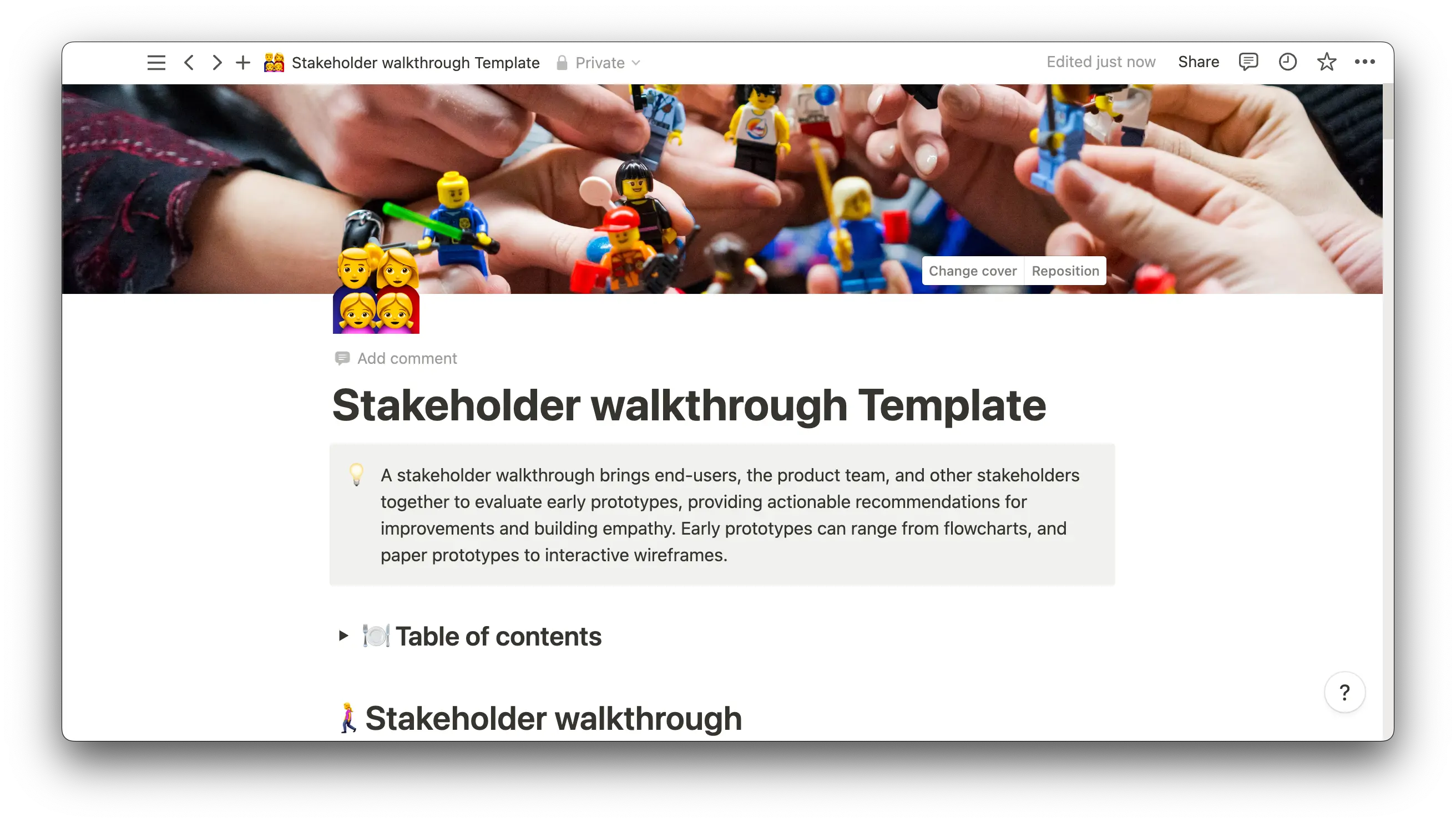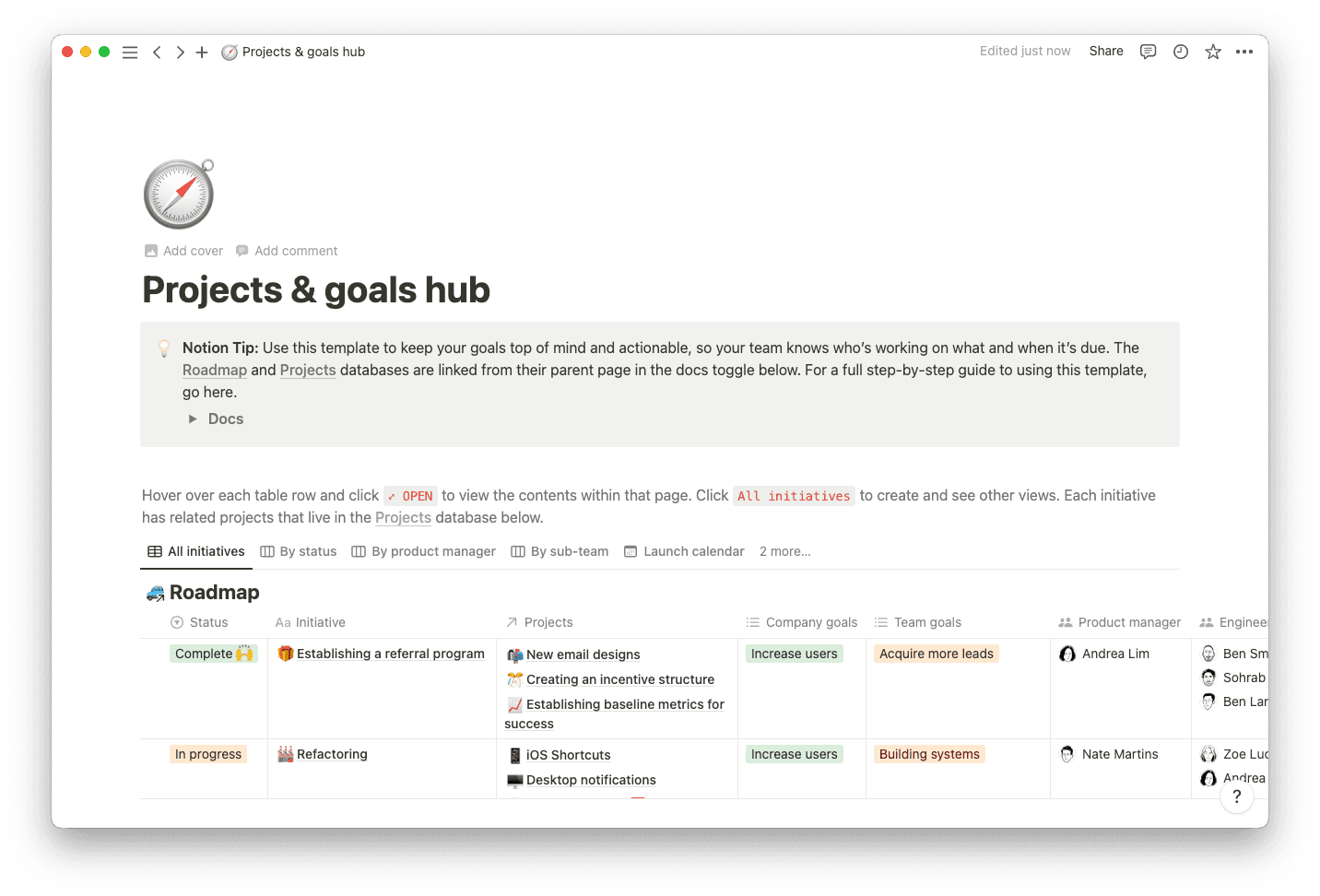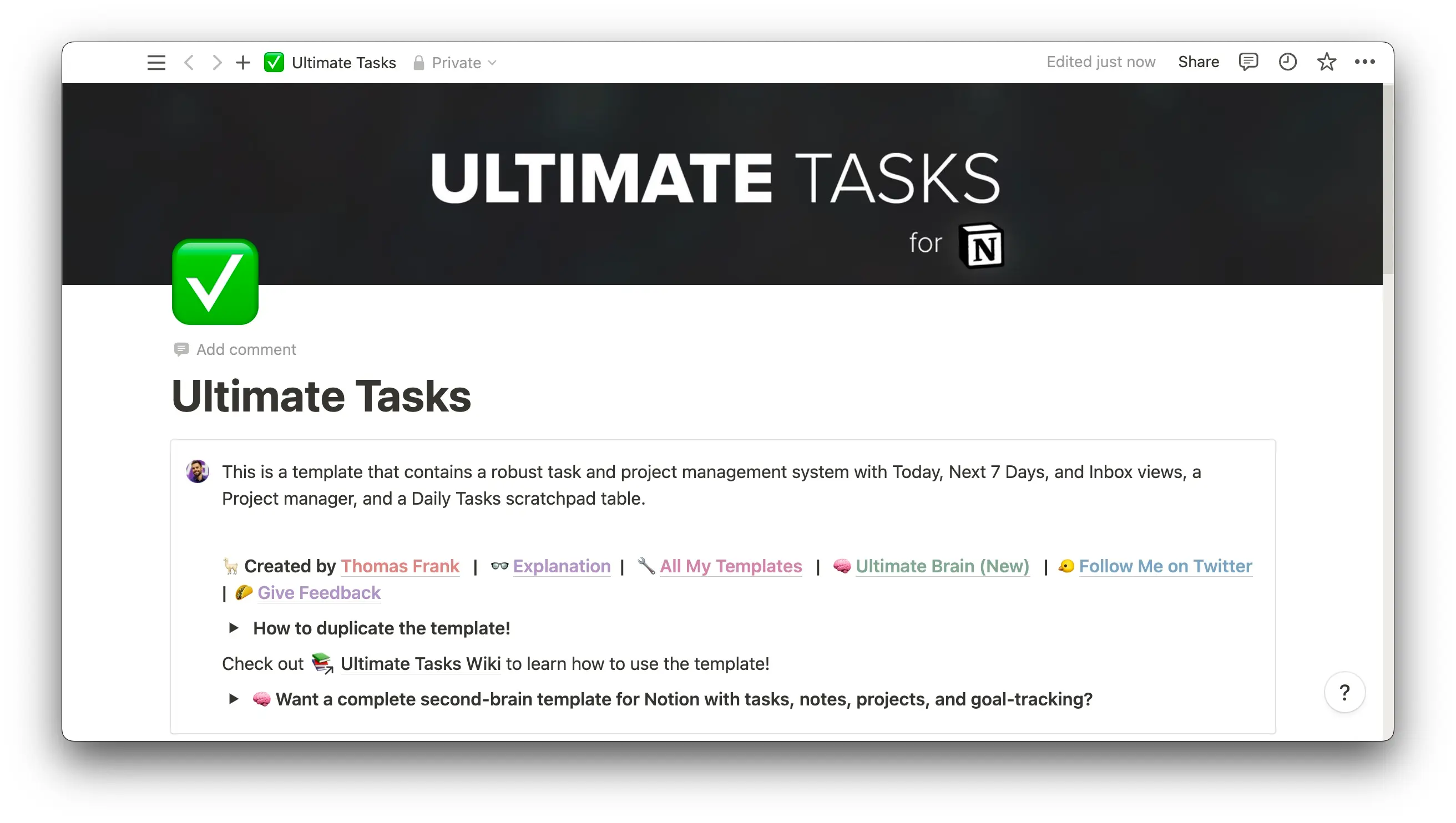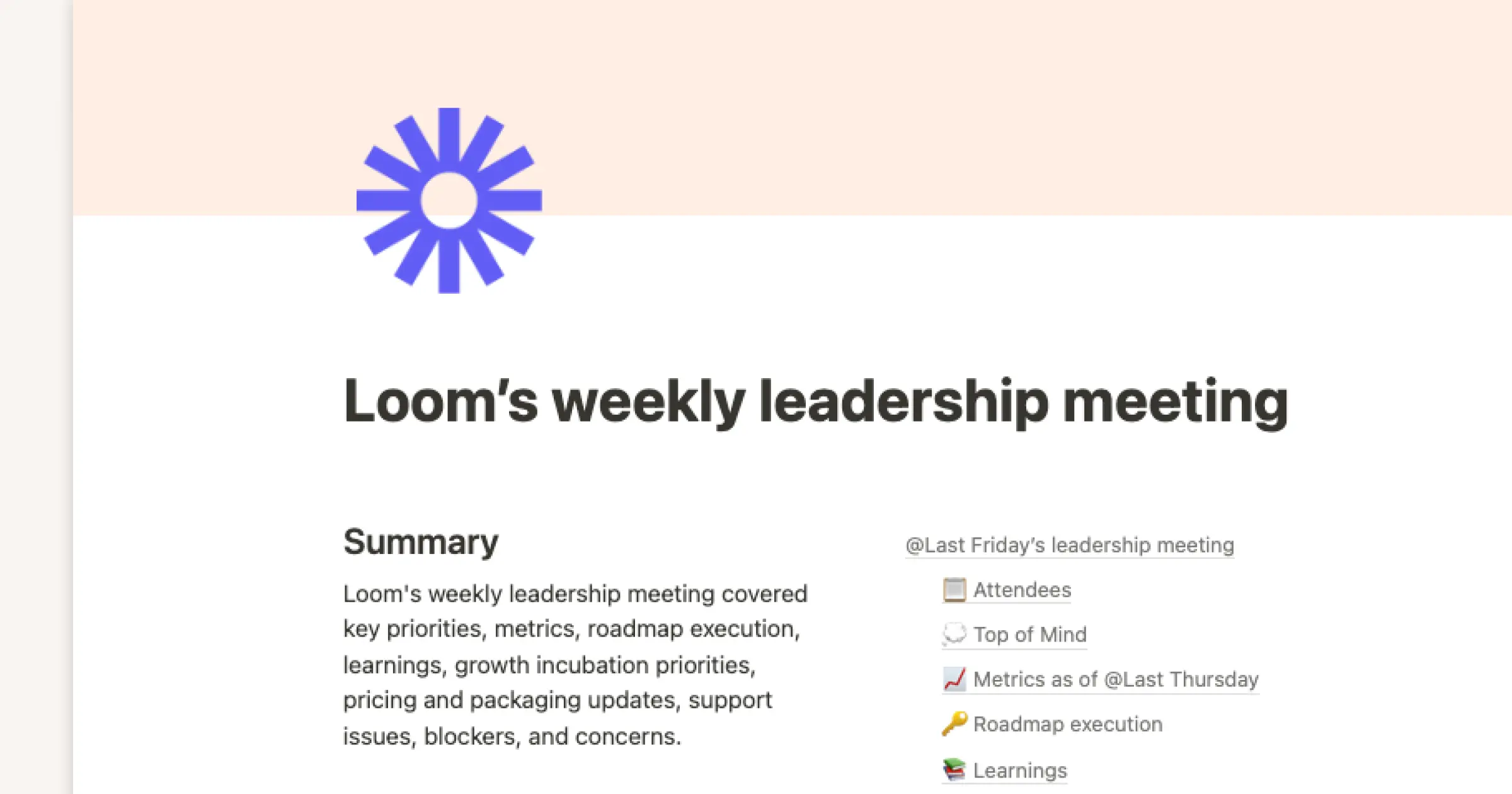Kicking off a project feels at once nerve-wracking and exciting. You've put a lot of time, effort, and research into something that will solve a problem and move your company forward. But you need to ensure everyone is on the same page to limit potential roadblocks to success.
Communication is the cornerstone of smooth strategy implementation. Sure, you could send an email, but your project kickoff deserves more than a short message that your team, stakeholders, and clients could miss. It needs a project kickoff meeting with a solid kickoff meeting agenda.
Confusion and misunderstandings can destroy a project’s workflow. Add a stellar agenda to your meeting to set the tone and aim your project toward success.
What’s a project kickoff meeting?
A project kickoff meeting serves one of two primary purposes: to inform your team about project details or the client about the project’s scope and timeline. If the initiatives involve both groups, you should have a separate kickoff meeting for each, initiated and run by the project manager.
Why are two separate meetings necessary for internal team members and external stakeholders or clients? It all comes down to the details. Your internal team needs to know every task, dependency, and minute deadline. Clients, on the other hand, only need to know overall goals and objectives without a zoomed-in focus on project details. External stakeholders want to see metrics and deliverable dates down the line, but they don't need to know what block of code a developer will work on in three weeks’ time.
From a project management perspective, the internal sync is the first meeting with new team members assigned to the project and the launch meeting for the initiative. Sometimes it's just a kickoff call over Zoom; other times it’s a face-to-face discussion in the boardroom.
During this meeting, you or your project manager informs the team of the goal while allowing space for questions about the project. For internal team members, this helps avoid project scope creep. Meanwhile, stakeholders can understand their contributions and when to provide input further down the project timeline.
Clients benefit when they understand timelines and know when to expect deliverables. External kickoff meetings can be short and sweet, but don’t skimp on the crucial details of the project or what needs to be prioritized. You or the project manager should gather the key team members leading the initiative and present the client with your vision, goals, and plan of action. Let them know what they can expect when, and leave room for discussion at the end. Making your clients happy is the most important aspect of any external project, so give them as much — or little — information as they need to feel confident and secure.
Types of kickoff meetings
Like projects, not every kickoff meeting looks the same. But broad categories allow us to group these gatherings into basic types. Here are a few:
Internal project kickoff meeting
Your internal project kickoff meeting gathers all project team members to discuss expectations related to their individual roles. You should go over your project’s plan, objectives, scope, and timeline. Team members ask questions, and you reference or revise your project plan based on the answers.
Common internal projects include launching a testing plan project for software development, marketing initiatives, and building internal API tools. Whether the project is client-facing or strictly internal really doesn't matter — you want to make sure your project team is aligned and aware of their responsibilities regardless.
External or client project kickoff meeting
You want to be formally prepared for external or client-facing project kickoff meetings. You need a project brief, a high-level project roadmap, and a list of project stakeholders. This is also the time to set up a clear line of communication with clients, like a Slack channel, to share status updates.
The key takeaways from a client project kickoff meeting are introducing the project team, setting communication timelines, and sharing expected goals and deliverables. It's all about establishing expectations so everyone is aware of the overall project mission, internally and externally. Naturally, clients will have questions, so be sure to bring all your project documents (sanitized for client consumption) to address them.
Executive sponsor project kickoff meeting
This type of meeting is only necessary if some of your stakeholders sit in the C-suite. Following your internal meeting, this quicker discussion will focus on the overall project goals and how they relate to company objectives.
Skip some of the minutiae, like tasks and specific deliverables, to present a project plan outline and roadmap. Your best bet for this kind of meeting is to offer an executive summary and a business case explaining why this project is integral to the business.
Agile project kickoff meeting
Don't worry — an Agile project kickoff meeting isn't necessary before each sprint within your Agile project management operation. But it's helpful to hold a sync either annually or bi-annually to ensure your team is still on the same page, bring new team members up to speed, and refresh communication channels. Think of this type of kickoff meeting as a halftime pep talk before everyone gets back to the game.
Components of a kickoff meeting agenda
While the type of kickoff meeting varies based on your project, stakeholders, and client needs, your meeting agendas will often have a similar structure. Here are the key components:
1. Introductions
Everyone just walked into a meeting room (or joined the call) for a new project, and while they might not know their exact role yet, they know they'll be working together. Start your meeting agenda with each team member’s position and function, so everyone knows which piece of the puzzle they represent. If the meeting is client-facing, introductions help external stakeholders know your team has all the bases covered.
2. Project background
The project background section of your meeting agenda contains the “Where,” “Why,” and “How.” Add this background to your project proposal and provide the history of your project's inception and the reasoning behind it. The background and proposal encourage buy-in from stakeholders and management, ensuring you have the budget and support to officially start your project.
3. Scope
Your project manager defines the project scope using your budget and general time frame. This detailed description of your project informs tasks, dependencies, and individual roles, so everyone knows what’s expected of them over time.
4. Timeline
A project timeline ensures there's clarity around due dates and responsibilities. Without a timeline, you could end up with scope creep, where a project never seems to end. Here, add all deliverables to a chronological roadmap, including any milestones along the way. Your team should discuss realistic due dates for all tasks and dependencies, ending in a Gantt chart or other project management tool.
5. Risks
Your project manager should develop a risk assessment plan that outlines any risks that could occur during the project. Once you consider all potential roadblocks, prioritize the most pressing obstacles to develop a mitigation strategy. Assign team members to each risk category so everyone knows who handles what if a specific problem arises.
6. Roles and responsibilities
This section advises each team member of their direct project responsibilities. You also want to establish a transparent chain of command so your team knows where to send escalations.
7. Methodology and tools
Dedicate this part of your agenda to the tools you’ll use to complete the project. Let your team know if you use an Agile, Waterfall, or hybrid approach. And make sure they have access to all project management tools and schedule any training that needs to take place.
8. Q&A session
Your project kickoff template should include a section to take notes about questions posed by participants. After discussing project details with your team, they may suggest efficiencies or missed tasks you should include in your project plan. Giving your team and external clients time and freedom to ask questions refines your project scope by considering all variables.
9. Next steps
Recap everything discussed during your project kickoff meeting and put a checkmark in every box. Now, finally, it's time to start your project.
Kickoff meeting best practices
Before you start filling out a project kickoff template, here are some best practices to consider to make your meeting as productive as possible:
Prepare — take some time to review the agenda and ensure it contains all pertinent project information.
Include the right team — double-check that your team has all the necessary members to hit each milestone. If your project calls for a developer, make sure a developer is in the room. However, that doesn't mean you need to invite multiple developers. Keep the team focused and staffed with only relevant contributing members.
Stay on target — to keep your meeting productive, stick to your agenda. There will be moments when it seems like a natural progression to stray off-topic, but team members may lose focus after being stuck in a long, irrelevant discussion.
Communicate — send meeting minutes and share your chosen project update communication platform. Be sure everyone knows how to log in, what updates to expect, and at what frequency to expect them.
Proper introductions — go around the table and have each person introduce themselves and their role. You'll likely have representatives across departments, so it helps your project's knowledge base to know what skills everyone brings to the table.
Single source — reference the single source of truth for your project, whether this is your project plan, a Google Doc with project outlines, or your project management software. This way, everyone knows where to look when they need information.
Ask questions — sure, you might be the project manager and think you know it all, but you have a room full of experts. You should tap into their knowledge. Asking questions about your project timeline or scope helps refine the workflow and lets your team know you're accepting feedback.
Collaborate — from Gantt charts and Kanban boards to value stream mapping, provide your team with the tools to collaborate and succeed.
Become a pro at meetings with Notion
Planning for a meeting often takes more time than the meeting itself. Save on resources by turning to Notion for a helping hand.
You can quickly custom-build a kickoff meeting agenda template with Notion — and it's totally free. Additionally, check out Notion's pre-built templates and start your kickoff summit with effective meeting notes, project goals, and task tracking.

